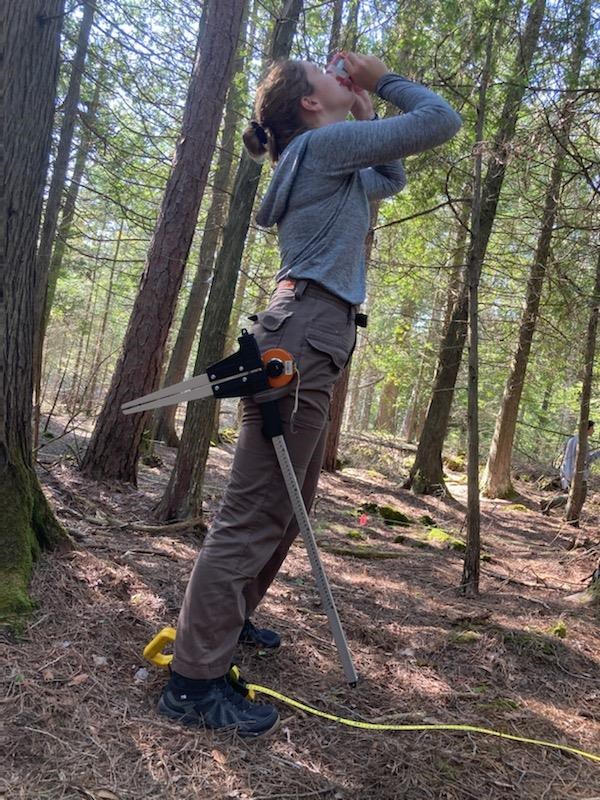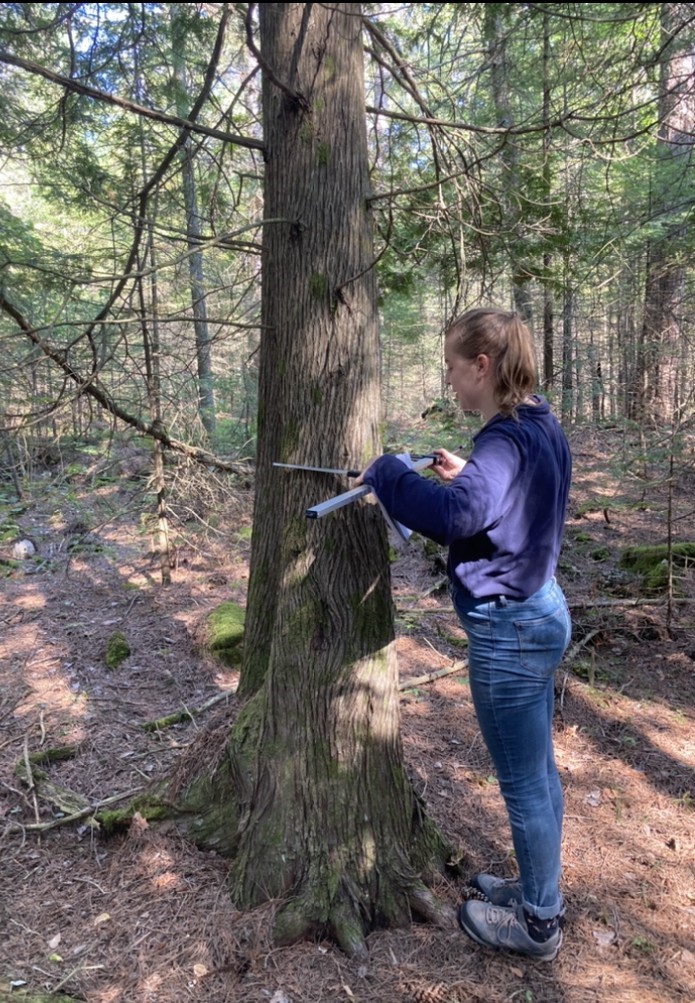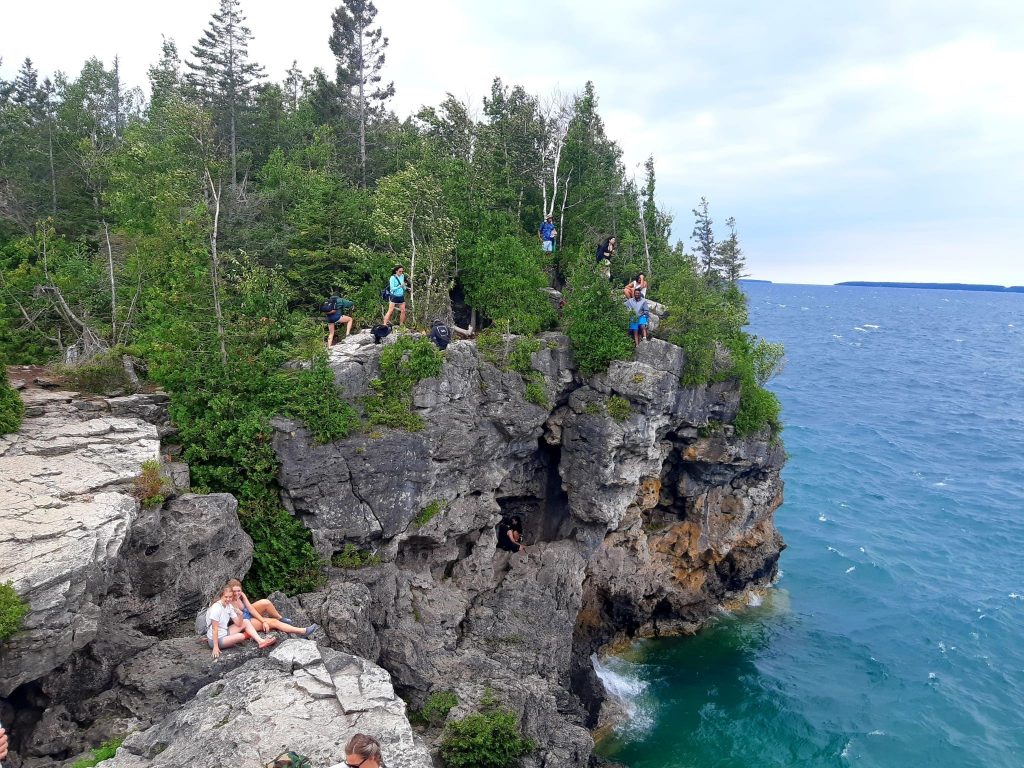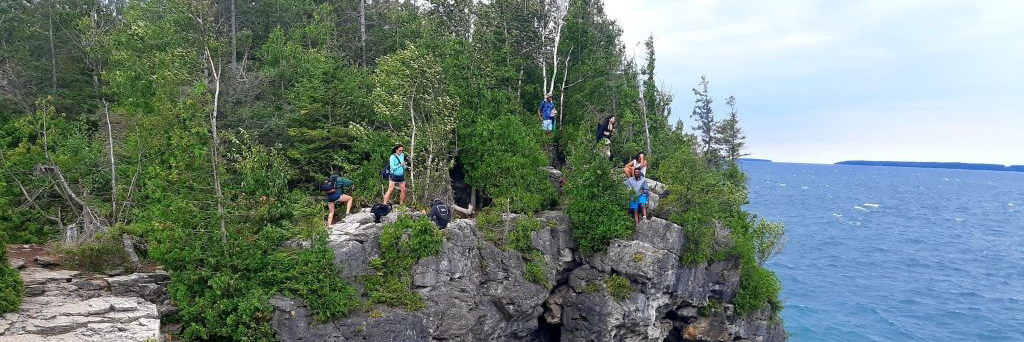Designated as an UNESCO World Biosphere Reserve, the Bruce Peninsula offers an unprecedented experience in biodiversity for students in the Faculty of Environmental and Urban Change (EUC).
By Elaine Smith
It is two thumbs up for Learning the Bruce [Peninsula], according to students who took the inaugural field course run by the Faculty of Environmental and Urban Change (EUC).
“It was just amazing,” said Rachel Pellegrino, who is working toward a BA in geography and a concurrent BEd. “I took it for the experience of being in a field course and it’s the best thing I’ve done at York.”

Jacky Duong, a fourth-year student in human geography, called his first field course since the start of the pandemic “an exceptional experience.”
“I’ve lived in Toronto my whole life and rarely leave the 905 [Greater Toronto] area, so experiencing small town Ontario pierced my Toronto-centric bubble and I’m tempted to explore more.”
It’s just the kind of response that Richard Bello, a climatologist, and W. Steven Tufts, a human geographer, both associate professors at EUC, are delighted to hear, because they hoped that the six-day, intensive summer course – partially funded by York’s Academic Innovation Fund and the EUC alumni association – would be both an excellent learning experience and an antidote to the pandemic.
“The course was meant to be a capstone experience that allowed students to apply theory in the field, offering both experiential learning and community engagement,” said Tufts. “We wanted to make it a field experience that didn’t cost students a lot of money, and, for us, it was also an unintended lesson on how to pull off a field course during a pandemic, putting protocols in place to make everyone feel safer.”
The Bruce Peninsula made an excellent laboratory: it is a UNESCO World Biosphere Reserve containing the largest continuous forest in southern Ontario, as well as beaches, Indigenous communities and small towns. The course, which had 16 students in 2021, featured two streams that took advantage of all these characteristics. The physical geography stream offered hands-on experience working in the forest, determining if climate change is affecting its ability to remove carbon dioxide from the atmosphere.

“I introduced the students to different tools, methods and sensors to measure how much carbon there is in the trees, vegetation and soils and whether this eco-system is healthy,” said Bello. “It provided a snapshot of a 115-year-old ecosystem, because the entire area, except for Tobermory, burned to the ground in 1908. Can we forecast what will happen in the future, given the current stresses?”
The students employed a variety of research techniques, some new and some that they had only used in a lab, such as taking tree core samples, correctly gathering soil samples and learning to calculate the deadwood in a specific area. They used their data to evaluate the health of the forest.
“I loved being in the forest and learning the techniques and tools to use there,” Pellegrino said. “I wanted the opportunity to analyze information and see how geography would work in the field.”
The human geography option explored the impact of COVID-19 on the businesses within the community, designing and distributing a survey among stores and restaurants in Sauble Beach, one of the small centres on the Peninsula. They had guest speakers who addressed topics such as the rural issues facing the inhabitants of both Indigenous and non-Indigenous communities, considering topics such as land claims and agriculture. Each then chose an issue facing the county for an independent paper.
“I learned proper survey techniques and what goes into crafting a good questionnaire,” Duong said. “I also improved my communications skills.”
The students and their professors were based at the Bluewater Outdoor Education Centre in Wiarton for the week, living in the dormitory there and eating in the cafeteria. They were busy with lectures and research during the day, but in the evenings, there were campfires where everyone gathered to discuss the day informally and look at the stars – a rarity for some of the students from urban settings. The gatherings built a real sense of community.
“It was wonderful to see in the professors in a different environment and getting to know more people after two years of classes online,” said Pellegrino. “Every night around the fire, I’d get to talk to people from different walks of life and it was awesome.”
Duong agreed, noting, “Six days in a close-knit environment built great ties with people I may have only seen in classes before. Those on the human geography and physical geography sides exchanged experiences every day and got to share our perspectives.”
The immersive aspect of the experience is something Bello finds invaluable.
“In field courses, we can learn together,” he said. “I’m guiding the students, but a number of times, they’ll ask questions that twig new lines of research. When you’re immersed, things occur to you that wouldn’t strike you on a TV screen.
“I was comfortable not trying to structure every moment so the students could do their own learning.”

The final day of the course focused on enjoying the unique features of the Bruce: the beach, a rehabilitated quarry and two major tourist spots – a grotto and Bruce National Park. The students created photo journals that included their fieldwork and their fieldtrips, evidence of their fascination with the entire experience.
Tufts says that a field course should be social as well as educational. “They are supposed to be bonding as well as learning,” he said. “We want to build alumni who remember York fondly.”
Bello and Tufts hope to offer the course again soon. It is an experience that Duong and Pellegrino wholeheartedly recommend to their peers.


